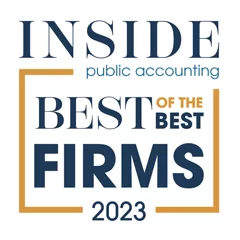Several Accounting Standards Updates (“ASU” or “ASU’s”) issued by the Financial Accounting Standards Board (“FASB”) became effective January 1, 2016. Many of these updates, which are now part of the Codification, will have a direct impact on the accounting and financial reporting of private real estate companies in 2016; whereas, a lot of them will not. The following is a brief summary of the ASU’s required to be adopted in 2016 that will impact the private real estate industry and a listing of all other ASU’s not covered in the summary.
Codified ASU’s Required to be Adopted by Private Companies in 2016
Going Concern
ASU 2014 – 15 Presentation of Financial Statements – Going Concern (Subtopic 205 – 40): Disclosures of Uncertainties about an Entity’s Ability to Continue as a Going Concern
This new standard, issued by the FASB, has shifted the burden of analyzing an entity’s ability to continue as a going concern from auditors to management. Prior to this ASU there was no requirement for management of an entity to perform a going concern analysis, as there were no applicable Generally Accepted Accounting Principles (“GAAP”), and the only relevant professional literature was included in Generally Accepted Auditing Standards (“GAAS”)[1], which only applies to public auditors. The following are the critical points to understand related to this new standard:
- Management is required to perform an analysis of an entity’s ability to continue as a going concern.[2] There are no scope exceptions to this requirement.
- Management is required to evaluate the going concern principle after year-end, but before issuance of the entity’s audited financial statements.
- The analysis is required to consider all “known” and “reasonably knowable” facts and circumstances at the date the financial statements are issued to determine if, individually or in the aggregate, substantial doubt is raised about the entity’s ability to continue as a going concern within one year of the date the financial statements are issued (or are available to be issued).[3] The important distinction here is the analysis is mandated to cover one year from the issuance date of the financial statements and not the balance sheet date.
- ASC 205-40-50-4 explicitly states the initial analysis to determine if substantial doubt exists cannot take into consideration management’s plans that have not been fully implemented at the date the financial statements are issued (i.e. plans to raise capital, restructure or refinance debt, dispose of an asset, etc.).
- Substantial doubt exists if it is probable[4] the entity will not be able to meet its obligations as they become due within one year from the date the financial statements are issued or are available to be issued. Probable is defined as “the future event or events are likely to occur.”3
- If substantial doubt exists after management has performed the required analysis consideration should be given to future plans to mitigate the events or conditions that raised substantial doubt. The ASU only allows management to consider its plans if two required conditions are satisfied:
- It is probable3 that management’s plans will be effectively implemented within one year after the date the financial statements are issued.[5]
- It is probable3 that management’s plans, when implemented, will mitigate the relevant facts or events that raise substantial doubt about the entity’s ability to continue as a going concern within one year after the date that the financial statements are issued.5
In order to clarify the above required points the FASB included in the ASU the following:
- ASC 205-40-50-9 states it generally cannot be probable for management’s plan to be implemented unless such plan has been approved by those with appropriate authority prior to the date the financial statements are issued.
- Management’s plans that are not probable cannot be considered in the evaluation of alleviating substantial doubt.
- If substantial doubt is raised and not alleviated or if substantial doubt is raised and alleviated there are required disclosures in the entity’s audited financial statements.[6]
- The going concern analysis is required annually going forward.
- See exhibit A for a pictorial overview of the decision making process for analyzing going concern as published in this ASU.
Extraordinary and Unusual Items
ASU 2015 – 01 eliminates the concept of extraordinary items from GAAP and changed ASC 225-20 from Income Statement – Extraordinary and Unusual Items to Income Statement – Unusual or Infrequently Occurring Items. The key provisions of this ASU are:
- Added “infrequency of occurrence” and “unusual nature” to the Master Glossary.
- Infrequency of occurrence – The underlying event or transaction should be of a type that would not reasonably be expected to rerun in the foreseeable future…[7]
- Unusual nature – The underlying event or transaction should possess a high degree of abnormality and be of a type clearly unrelated to, or only incidentally related to, the ordinary and typical activities of the entity…7
- If either of the above definitions are met, or both, and are material to the financial statements then the transaction should either be disclosed as a separate line item in income from continuing operations or clearly disclosed in the notes to the financial statements if not separately stated. Most likely an event or transaction that falls under these two definitions will need to be disclosed, even if separately stated in the income statement.
- Entities that present dual year presentation can either elect to adopt this standard retrospectively or prospectively.
Debt Issuance Costs
ASU 2015 – 03 Simplifying the Presentation of Debt Issuance Costs and ASU 2015 – 15 Presentation and Subsequent Measurement of Debt Issuance Costs Associated with Line-of-Credit Arrangements, both amendments to ASC 835 – 30 Imputation of Interest, became effective in 2016. The main provisions of these two standards are as follows:
- Does not change the recognition and measurement principles of debt issuance costs. The amortization of such costs should continue to be amortized into interest expense and the effective interest method should still be utilized unless another consistently applied method is not materially different.
- Changes the classification of third party costs incurred, as part of obtaining debt, from a deferred asset to an offset of the related debt instrument in the liabilities section of the balance sheet. This presentation is consistent with debt discounts that have historically been applied to costs incurred in obtaining debt that were paid directly to the lender.
- Third party debt costs incurred before funding should be classified as a deferred asset and not amortized until closing of the debt instrument, at which time the costs should be reclassified as an offset to the related borrowing, and amortization should commence at the same time.
- Costs incurred to obtain a revolving debt arrangement were not addressed in the original ASU and were later clarified in ASU 2015 – 15 as a result of the SEC[8] staff stating they would not object to the classification of costs incurred related to a revolving debt arrangement as a deferred asset and amortized on a straight line basis over the life of the related revolver. Amortization should commence on the date of closing regardless of whether funds are drawn at that time.
- The ASU’s do not change existing GAAP for debt restructures and modifications.[9]
- Existing GAAP for debt elected to be carried at fair value remains unchanged and thus costs incurred to obtain debt that an entity has elected to carry at fair value should be expensed when incurred.[10]
The Debt Issuance Costs whitepaper issued in November 2015 by Tidwell Group provides a more in-depth discussion and analysis of the changes to debt issuance costs as a result of the issued ASU’s.
ALERT – COMING SOON
Statement of Cash Flows
ASU 2016 – 15 was finalized in August of 2016. The ASU is required to be adopted in 2019 for private companies, but early adoption is allowed. This ASU addresses 8 areas of classification within the statement of cash flows that have had significant diversity in practice in order to clarify how such cash receipts or disbursements should be classified. The following are 8 areas organized based on applicability to real estate entities and those that likely will not apply to most real estate entities.
- Key areas addressed that relate to real estate entities:
- Debt prepayment or debt extinguishment costs – cash paid for debt prepayment costs and extinguishment costs (i.e. prepayment penalties, lenders legal fees, etc.) should be classified as financing activities.
- Proceeds from the settlement of insurance claims – the ASU was written for all industries, and thus contemplated things such as business interruption claims, general liability claims, etc. The primary insurance claims for real estate entities are related to casualty losses. The ASU states that cash from insurance claims should be classified based on the nature of the claim; so, in most cases insurance proceeds for real estate entities will be classified as investing activities.
- Distributions received from equity method investees – the ASU allows for 2 acceptable methods.
- The cumulative earnings method allows an entity to track cumulative distributions received and classify them as either a return on investment, in which case the cash received would be classified as operating activities, or a return of investment if cumulative cash received is greater than the entity’s basis in the investment as a result of cash contributions to the investee. In the case of a return of investment the cash should be classified as investing activities.
- The nature of distribution method requires an entity to classify each individual distribution based on the nature of the activities of the investee that generated the distribution. For example, if the distribution received was the result of positive net operating income, the classification would likely be operating activities. A distribution received due to a capital event, such as a refinance of debt, would likely be classified as investing activities.
- Other areas that likely won’t apply to most real estate entities:
- Settlement of zero-coupon debt instruments or other debt instruments with coupon interest rates that are insignificant in relation to the effective interest rate of the borrowing
- Contingent consideration payments made after a business combination
- Proceeds from the settlement of corporate-owned life insurance policies, including bank-owned life insurance policies
- Beneficial interests in securitization transactions
- Separately identifiable cash flows and application of the predominance principle
In addition, the Emerging Issues Task Force (“EITF”) reached its final consensus at its September 2016 meeting in relation to the presentation of cash, cash equivalents and restricted cash in the statement of cash flows.[11] The consensus reached is that all cash on the balance sheet should be included in the reconciled cash balance for purposes of the cash flows statement. This will impact the presentation primarily of restricted cash balances removing them from the operating or investing sections and including them in the net change between beginning and ending cash balances. Once issued in its final standard, the adoption will be required in 2019 for private entities and early adoption will be allowed.
Will the Clarification of the Definition of a Business Simplify and Reduce the Cost of Accounting for Real Estate Acquisitions?
The FASB is currently in the process of clarifying the definition of a business. On November 23, 2015, the FASB issued proposed Accounting Standards Update, Business Combinations (Topic 805): Clarifying the Definition of a Business. The comment period closed January 22, 2016 and the FASB held its most recent meeting on August 24, 2016. At this meeting, the FASB specifically addressed real estate and whether certain lease related intangible assets and the real property acquired could be viewed as a single asset for purposes of the scope exception that would allow transactions to be accounted for as an asset acquisition as opposed to being treated as a business combination. The standard is currently in exposure draft redeliberations with a final issued standard expected in the near future.
Depending on the final issued standard, it is possible that real estate acquisitions could be considered an asset acquisition and accounted for as such. This would eliminate some of the complexities and cost of accounting for these transactions as business combinations and recording the fair value of all assets acquired and liabilities assumed at their respective fair values. Under asset acquisition accounting the purchase price is allocated across the assets acquired and liabilities assumed based on relative fair value and acquisition costs incurred are capitalized to the basis of the acquisition.
Stay tuned for the final issued standard.
Other Effective ASU’s for Private Companies in 2016
There are several ASU’s that became effective in 2016 for private companies that will have a much lesser impact, if any at all, to the private real estate industry. Following is a list of the remainder of standards that became effective in 2016 not addressed above:
- ASU 2014 – 12 Compensation – Stock Compensation (Topic 718): Accounting for Share-Based Payments When the Terms of an Award Provide That a Performance Target Could Be Achieved after the Requisite Service Period
- ASU 2014 – 13 Consolidation (Topic 810): Measuring the Financial Assets and the Financial Liabilities of a Consolidated Collateralized Financing Entity
- ASU 2014 – 16 Derivatives and Hedging (Topic 815): Determining Whether the Host Contract in a Hybrid Financial Instrument Issued in the Form of a Share Is More Akin to Debt or to Equity
- ASU 2014 – 18 Business Combinations (Topic 805): Accounting for Identifiable Assets in a Business Combination (Consensus of the Private Company Council)
- ASU 2015 – 05 Intangibles – Goodwill and Other – Internal-Use Software (Subtopic 350-40): Customers Accounting for Fees Paid in a Cloud Computing Arrangement
- ASU 2015 – 06 Earnings Per Share (Topic 260): Effects on Historical Earnings per Unit of Master Limited Partnership Dropdown Transactions
- ASU 2015 – 10 Technical Corrections and Improvements
- ASU 2015 – 12 Plan Accounting: Defined Benefit Pension Plans (Topic 960 / Defined Contribution Pension Plans ( Topic 962) / Health and Welfare Benefit Plans (Topic 965): I Fully Benefit-Responsive Investment Contracts; II Plan Investment Disclosures; Measurement Date Practical Expedient
- ASU 2016 – 03 Intangibles – Goodwill and Other (Topic 350) / Business Combinations (Topic 805) Consolidation (Topic 810) ; Derivatives and Hedging (Topic 815): Effective Date and Transition Guidance (Consensus of the Private Company Council)
[1] AU – C Section 570: The Auditor’s Consideration of an Entity’s Ability to Continue as a Going Concern
[2] The FASB did not define the term going concern in this standard, and decided not to specifically define it. The only guidance in the ASU is that the going concern basis of accounting should be used until an entity’s liquidation becomes imminent. ASC 205 – 30 addresses the liquidation basis of accounting that should be applied once liquidation does become imminent.
[3] Defined in ASC 205-40-20. The usage of financial statement issuance date is consistent with that used in ASC 855, Subsequent Events
[4] Probable is used in this ASU consistent with the definition utilized in ASC 450, Contingencies
[5] ASC 205-40-50-7
[6] ASC 205-40-50-12 and ASC 205-40-50-13
[7] Master Glossary of the Codification
[8] Comments made at the June 18, 2015 Emerging Issues Task Force meeting. While this comment was made by the SEC staff it has since been codified and is applicable to private companies.
[9] ASC 470-20-30-13 and 470-50-40-18
[10] ASC 825-10-25-3
[11] EITF Issue No. 16 – A: Restricted Cash










